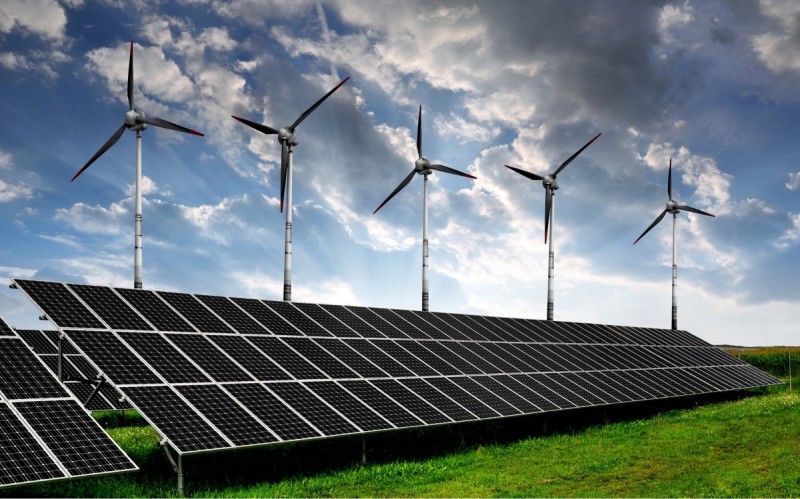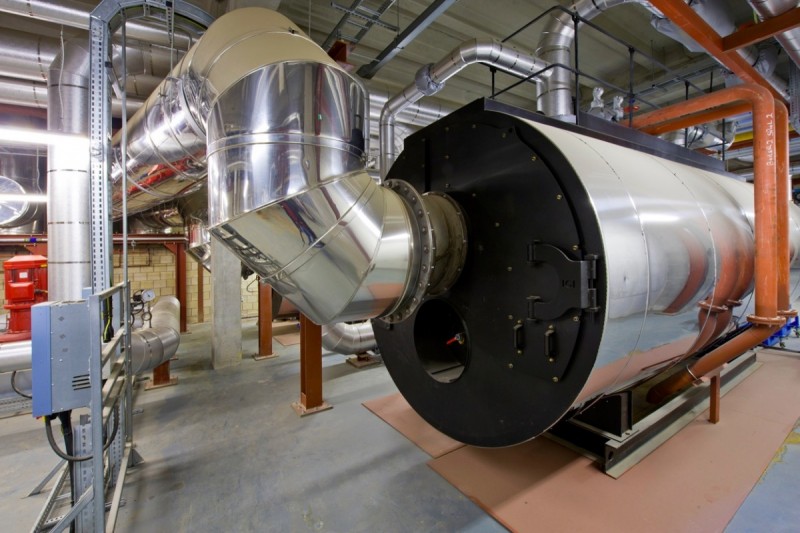What would DC look like without methane gas?

Solar panels in Orem, Utah by Aqua Mechanical licensed under Creative Commons.
This is part 2 of a two-part series. Read part 1 here.
DC’s gas utility has promised to transition its business model away from selling gas, a necessary step if the District is to achieve its commitment of carbon neutrality by 2050. As we outlined in our earlier post, ending DC’s reliance on methane gas would reduce emissions of the greenhouse gases that cause climate change. It would also improve indoor air quality and public health.
If DC successfully transitioned away from gas for heating, hot water, and cooking, what would that look like in practice?
Gas is polluting your home
Cooking on a gas stovetop means burning fossil fuels and emitting noxious fumes like nitrogen dioxide and carbon monoxide directly into a home’s air, which contributes to everything from dizziness to asthma to heart disease.
Indoor air pollution from gas combustion frequently exceeds Environmental Protection Agency outdoor air quality standards, but because indoor air is unregulated by the EPA, the toxic fumes are perfectly legal. DC’s high asthma rate—14% of children in the District have asthma—is highly correlated to indoor air pollution.
Getting rid of gas stoves and the associated health problems means cooking with electric or induction stoves, neither of which burn fossil fuels. Induction cooktops work by creating a magnetic field that transfers heat directly to the pot or pan. When heating on a gas stove, only about half the energy is transferred to the pot and the rest warms the air in the kitchen. An induction stove transfers about 90% of the energy directly to the pot.
A gas stove flame by Ervins Strauhmanis licensed under Creative Commons.
Cavemen needed fire, we don’t
The share of gas used for cooking is fairly low. The primary use for gas in buildings is heating, either with furnaces or boilers. Electric air-source heat pumps provide heat more efficiently and with less carbon pollution than gas. In recent decades, the efficiency and reliability of heat pumps have dramatically improved, allowing them to provide heat inside even amid frigid temperatures outside.
Heat pumps require only one unit of energy in the form of electricity to generate about three units of energy in the form of heat. The extra, non-electric energy comes from removing heat from the outside air, which is a source of essentially free energy.
Here is how it works. Let’s say the outside air is 25 degrees. To absorb heat from such cold air and transfer it indoors, the heat pump uses a refrigerant fluid. The refrigerant is even colder than the outside air, say 10 degrees, so it absorbs heat from the relatively warmer outdoor air.
The refrigerant is then compressed, which raises the temperature to between 120 and 140 degrees. The now-hot refrigerant is sent indoors through copper pipes, and the heat is transferred to indoor air while the refrigerant is sent back outside. Outdoors again, the pressure of the refrigerant is reduced and its temperature falls below that of the outdoor air, making it again ready to absorb heat from the outside air.
The cycle repeats over and over, providing exceedingly energy-efficient heating. The process requires electricity, but the electricity itself does not produce heat. It only transfers heat from outdoors to indoors. Heat pumps are about three times more efficient than electric baseboard radiators or gas furnaces.
Heat pumps by yum9me licensed under Creative Commons.
The same heat pump that warms a home in the winter can cool it in the summer, using the same process, but in reverse. Having the same system for heating and cooling can save money and allow buildings to move beyond gas and operate entirely on electricity. Indoor heat pump water heaters use the same technology, eliminating the need for gas-fired water heaters.
Homes not fueled by gas avoid the cost of gas lines, gas servicing, and gas metering. A study by the Rocky Mountain Institute found that using electricity for heating, hot water, and air conditioning reduces homeowner costs in new buildings. Electric retrofits of existing homes can save money for homeowners who would otherwise need to replace both a furnace and an air conditioner. Electric retrofits can also save money for those combining rooftop solar and electrification, according to the study.
Electrification necessitates efficiency
Decreased gas use increases reliance on electricity, and with DC’s electric mix moving toward 100% renewable sources because of the clean energy law going into effect this year, replacing gas with electricity means a substantial drop in greenhouse gas emissions. But electrification alone isn’t enough for DC to meet its climate goals.
Additional electricity demand resulting from switching off gas will require energy efficiency measures such as air-sealing and insulation of homes and other buildings. Increased efficiency will save money for utility ratepayers and keep costly upgrades of the electric distribution system to a minimum. While some costs will be borne by owners, governments should provide subsidies as well.
The District’s Clean Energy DC plan calls for a package of incentives targeting energy use reductions in existing buildings, with the program set up by 2020. If successful, it will pave the way for widespread electrification.
Efficiency efforts are already underway for large buildings. The DC Department of Energy and Environment is starting to set up the Building Energy Performance Standards program, which was created by the clean energy law and requires increased efficiency in buildings over 50,000 square feet beginning in 2021. The efficiency requirements will apply to buildings of 25,000 square feet in 2023 and 10,000 square feet in 2026.
Gas conduits by Vincent Aguerre licensed under Creative Commons.
Shutting off the pipeline, from California to Britain
The reliability, efficiency, and economics of heat pumps are fueling the transition off gas. In July, Berkeley, California passed a law prohibiting gas hookups in newly-constructed residential buildings. The local utility, Pacific Gas & Electric, supported the legislation. The ban takes effect on January 1. Fifty other California cities are considering their own gas bans.
In August, the California Public Utilities Commission issued a unanimous decision directing the state’s $1 billion energy efficiency program to start funding gas-to-electricity fuel switching programs. The commission’s order noted that gas is “a barrier to California’s progress on climate and energy goals.”
In March, the Conservative Party-led government in Great Britain announced a prohibition on gas in new residential buildings, moving the country toward heat pumps, increased efficiency and other alternatives to gas.
The Building Decarbonization Coalition concluded in white papers released earlier this year that fuel-switching from gas to electricity “will save consumers billions of dollars compared to other carbon reduction strategies” in part because “electric appliances have lower lifetime costs than fossil fuel appliances, especially considering the avoided costs of gas infrastructure.”
Gas-fired boilers by Vital Energi licensed under Creative Commons.
Decisions today, consequences for decades
The lifespan of an in-home furnace is up to 30 or more years, and up to 60 years for large boilers serving apartment and condo buildings. That means most gas boilers and furnaces installed today will still be in place by 2032, when DC has committed to cut greenhouse gas emissions in half. Many will be operating in 2050, the year DC has pledged net zero carbon emissions.
Fossil fuel interests claim ending the addiction to dirty fuels like methane gas is too expensive. In truth, acting now is far cheaper than waiting to address the problem and its devastating consequences in a much warmer future.
